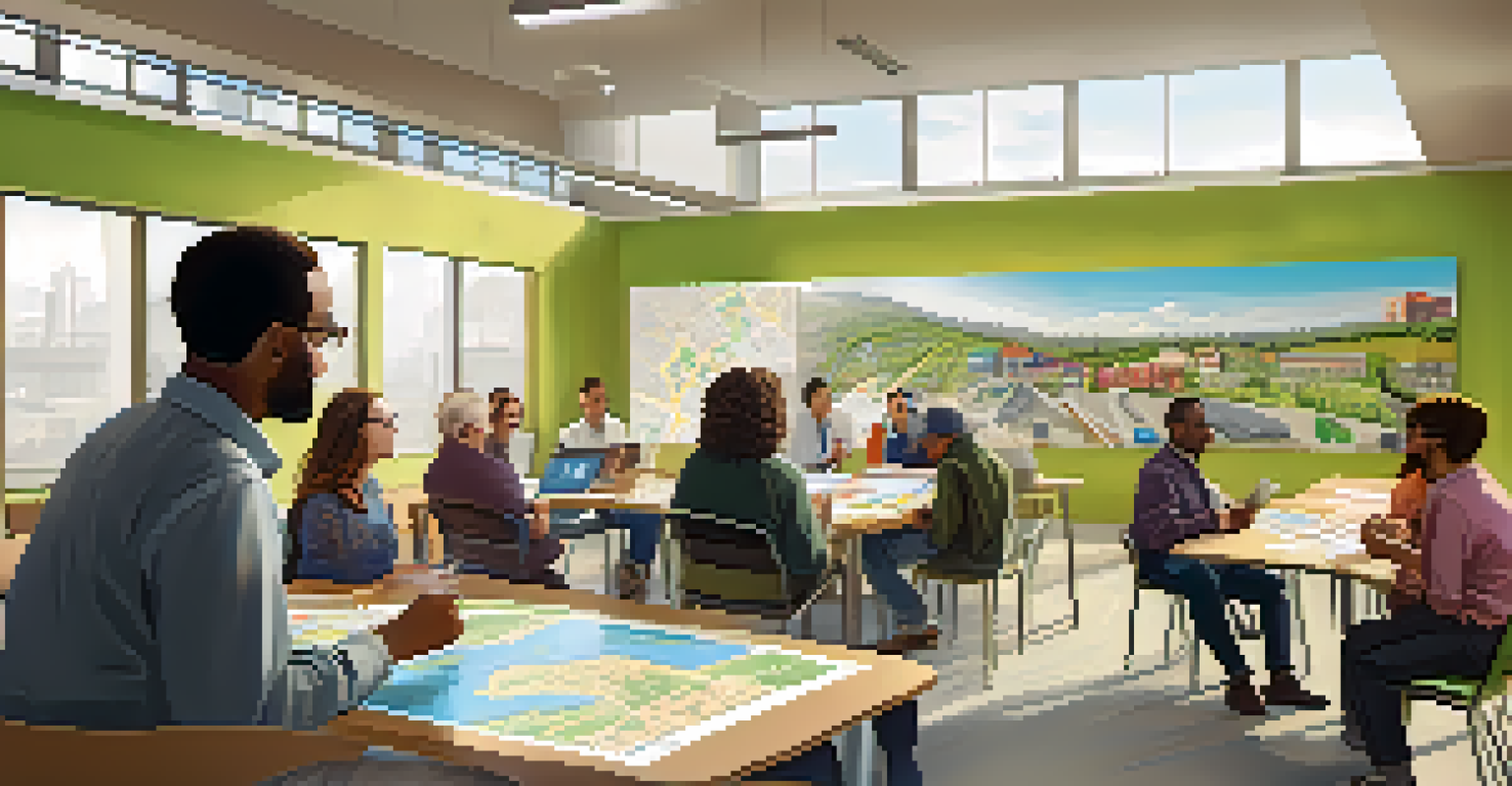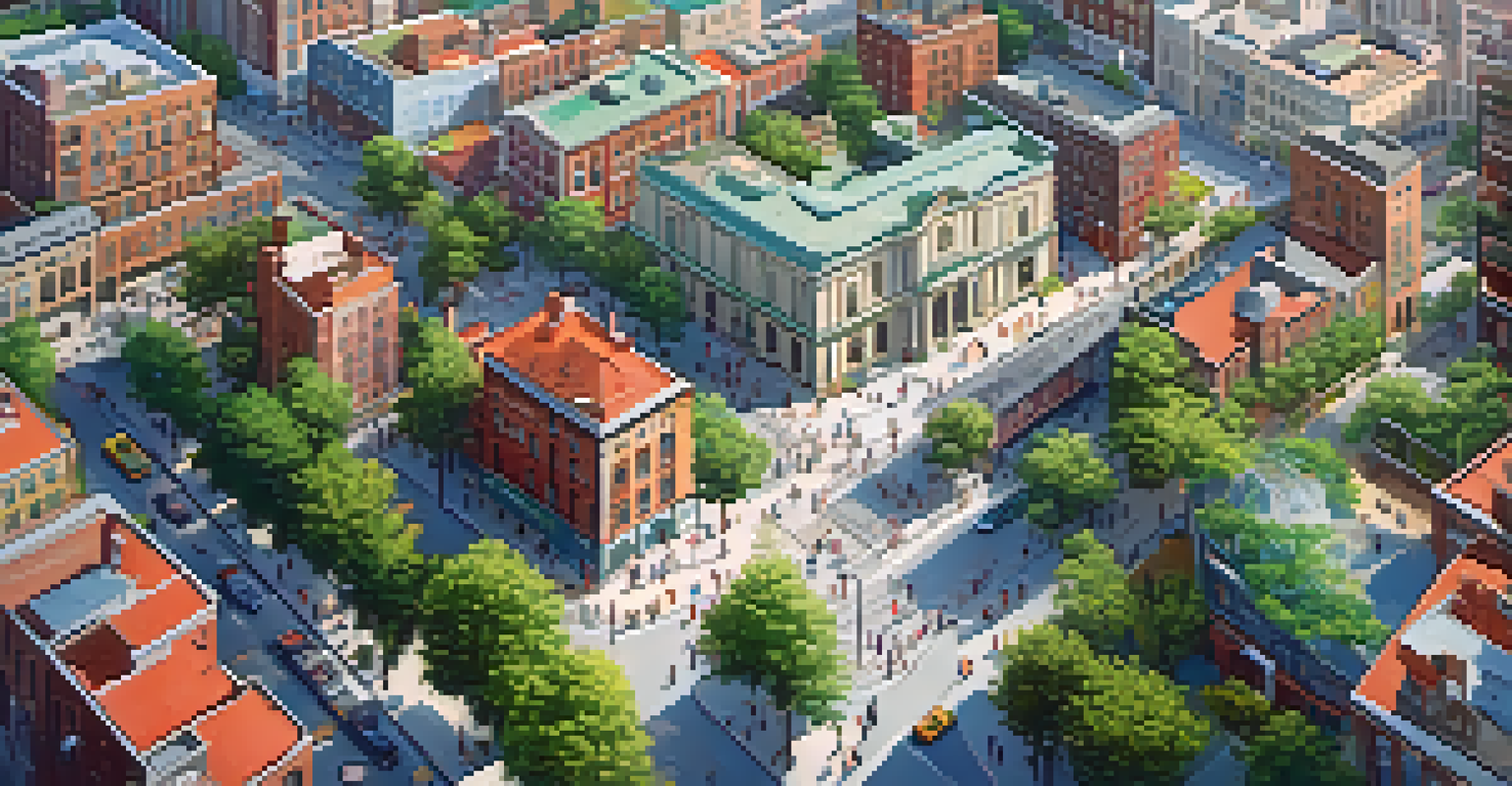The Future of Urban Planning: Participatory Approaches

Understanding Participatory Urban Planning
Participatory urban planning is a collaborative approach that involves community members in the decision-making process. This method ensures that the voices of residents are heard, leading to more inclusive and effective solutions. By bringing together various stakeholders, from local governments to residents, planning becomes a shared responsibility that reflects the community's needs.
The best way to predict the future is to create it.
Imagine planning a park not just through the eyes of city officials but with input from families, artists, and business owners. This collective brainstorming can illuminate unique ideas and highlight potential issues that may not be apparent to planners alone. As a result, the developments are more likely to be utilized and cherished by the community.
This approach fosters a sense of ownership among residents, encouraging them to take pride in their environment. When people feel invested in their community's design, they are more likely to engage in its upkeep and advocate for its interests.
The Role of Technology in Participatory Planning
Technology plays a pivotal role in enhancing participatory urban planning. Tools such as mobile apps, online forums, and social media platforms facilitate communication between planners and community members. These technologies break down barriers, allowing more people to voice their opinions and share ideas regardless of their location.

For instance, virtual town hall meetings can reach a wider audience than traditional gatherings, making it easier for residents with busy schedules to participate. Interactive mapping tools can also allow community members to pinpoint areas for improvement, helping planners visualize concerns or desires.
Community Voices Shape Planning
Participatory urban planning involves community members in decision-making, leading to more inclusive and effective outcomes.
As technology evolves, it continues to bridge the gap between urban planners and the public. This collaboration not only leads to better planning outcomes but also strengthens the community's trust in its leaders.
Benefits of Engaging the Community
Engaging the community in urban planning brings numerous benefits. One significant advantage is the increased likelihood of community support for projects. When residents feel included in the planning process, they are more inclined to back initiatives that reflect their values and needs.
A city’s greatness is measured by how it treats its weakest members.
Moreover, participatory planning can lead to more innovative solutions. Diverse perspectives often spark creativity, resulting in unique ideas that address local challenges. For example, a neighborhood may come together to design a community garden that serves as both a food source and a gathering space.
Lastly, involving the community helps to build social cohesion. When people collaborate on urban projects, they foster relationships and trust, ultimately leading to a stronger, more resilient community.
Challenges Facing Participatory Urban Planning
While participatory urban planning has many advantages, it also faces challenges. One major hurdle is ensuring that all voices are heard, especially those from marginalized communities. If certain groups are overlooked, the planning process can inadvertently reinforce existing inequalities.
Furthermore, the complexity of urban issues can overwhelm participants. With many moving parts, it can be difficult for community members to navigate the technical aspects of planning. Providing education and resources is essential to empower residents to engage meaningfully.
Technology Enhances Participation
Tools like mobile apps and virtual meetings facilitate communication, allowing more residents to engage in urban planning.
Lastly, balancing community input with expert advice can be tricky. Urban planners must find a way to integrate local insights while ensuring that projects meet technical standards and regulations. This delicate balance is crucial for successful outcomes.
Case Studies: Successful Participatory Planning
Several cities have successfully implemented participatory urban planning initiatives, setting examples for others to follow. One notable case is the city of Barcelona, where residents were actively involved in designing public spaces through workshops and online platforms. This engaged approach led to vibrant areas that resonate with the community's identity.
Another example is the city of Porto Alegre in Brazil, known for its participatory budgeting process. Here, citizens directly influence how public funds are allocated, ensuring that investments reflect community priorities. This system has empowered residents and increased transparency in governance.
These case studies illustrate the potential of participatory approaches to transform urban environments. By learning from these successes, other cities can adopt similar models and tailor them to their unique contexts.
The Future Landscape of Urban Planning
The future of urban planning is likely to be shaped by the ongoing integration of participatory approaches. As cities grow and evolve, planners will increasingly recognize the value of community input in creating sustainable and vibrant spaces. The emphasis will shift from top-down decision-making to collaborative efforts that prioritize resident needs.
We may also see a rise in hybrid models that combine traditional planning methods with participatory practices. This could lead to more adaptive planning processes that are responsive to changing community dynamics and emerging challenges.
Collaboration Builds Stronger Communities
Engaging the community not only fosters innovative solutions but also strengthens social bonds and trust among residents.
Ultimately, the future landscape of urban planning will be defined by inclusivity and collaboration. By valuing the voices of residents, cities can create environments that are not only functional but also reflective of the communities that inhabit them.
Conclusion: Embracing Change for Better Cities
In conclusion, participatory approaches in urban planning are not just a trend; they are essential for creating better cities. By actively involving community members, planners can craft environments that truly meet the needs of the people. This collaborative effort fosters innovation, builds trust, and promotes social cohesion.
As we move forward, it's crucial for urban planners and local governments to embrace these participatory methods. By doing so, they can create more equitable and sustainable cities that benefit everyone.

The future of urban planning lies in the hands of the community, and together, we can shape spaces where everyone feels at home.